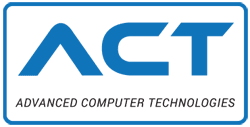The cost of hardware, software and accessories can quickly add up when you want to provide appropriate tools to every valuable player.
We’ve talked with owners who acknowledge their employees share computers and passwords because they believe it is cost-prohibitive to upgrade their hardware and software. We’ve visited businesses that are using older computers and operating systems that are no longer compatible with the newest software packages, forcing employees to complete tasks manually and inefficiently because their technology is unable to support their needs.
Many businesses simply add a line item to the budget that is comparable to the past year, and then hope it is enough to cover their needs. But we believe there is a way to look at this process more strategically.
Determine What is Needed
The first thing you should do is determine what you need. Putting a strategic technology plan in place, complete with written short- and long-term goals, helps ensure that your investments will improve the organization in a tangible way. Once you’ve determined your goals and the programs that are needed to fulfill those goals, figure out what it will cost. You can further dissect the numbers to identify areas where you can save and maximize your dollars later.
Action Steps That Will Help Control Your Budget
Here are some action steps you can take to help you develop and control your IT budget:
- Identify every program and individual that requires some form of technology, as well as the specific technologies you believe they require (i.e., hardware, software and accessories)
- Determine what level of technical support each program and individual require
- Set short- and long-term goals for every program
- Determine your total or allocated budgets
- Identify areas that can be centralized (e.g., email)
- Identify areas that must be maintained independent from others
In addition, many businesses don’t realize they may be eligible for a variety of unadvertised discounts on new equipment and software purchases, allowing them to increase their purchasing power.
Finally, ensure you have the proper level of support available at all times, including a proactive system in place that actively monitors and manages your entire network. We have seen budgets blown apart when a network malfunctions or a breach occurs, and significant dollars are spent repairing and replacing hardware and software. Working with a professional who can provide Managed Services is the best practice, as this guarantees you around-the-clock system monitoring and proactive system maintenance, along with a variety of other services, for a pre-determined monthly fee, helping you to control your IT consulting costs.
